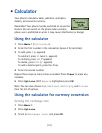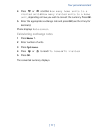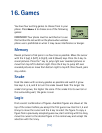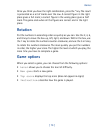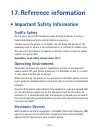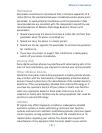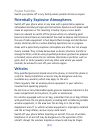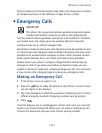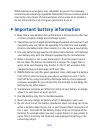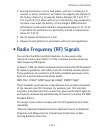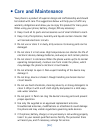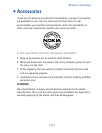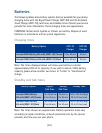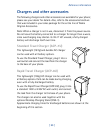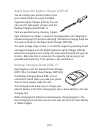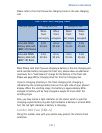[ 84 ]
When making an emergency call, remember to give all the necessary
information as accurately as possible. Remember that your wireless phone
may be the only means of communication at the scene of an accident -
do not terminate the call until given permission to do so.
• Important battery information
• Note that a new battery’s full performance is achieved only after two
or three complete charge and discharge cycles!
• The battery can be charged and discharged hundreds of times but it will
eventually wear out. When the operating time (talk time and standby
time) is noticeably shorter than normal, it is time to buy a new battery.
• Use only batteries approved by the phone manufacturer and recharge
your battery only with the chargers approved by the manufacturer.
• When a charger is not in use, disconnect it from the power source.
Do not leave the battery connected to a charger for longer than a
week, since overcharging may shorten its life. If left unused a fully
charged battery will discharge itself over time.
• (NiMH batteries only) For good operation times, discharge the battery
from time to time by leaving your phone switched on until it turns
itself off (or by using the battery discharge facility of any approved
accessory available for your phone). Do not attempt to discharge the
battery by any other means.
• Temperature extremes will affect the ability of your battery to charge:
allow it to cool down or warm up first.
• Use the battery only for its intended purpose.
• Never use any charger or battery which is damaged or worn out.
• Do not short circuit the battery. Accidental short circuiting can occur
when a metallic object (coin, clip, or pen) causes direct connection of
the + and - terminals of the battery (metal strips on the back of the
battery), for example when you carry a spare battery in your pocket or
purse. Short circuiting the terminals may damage the battery or the
connecting object.



